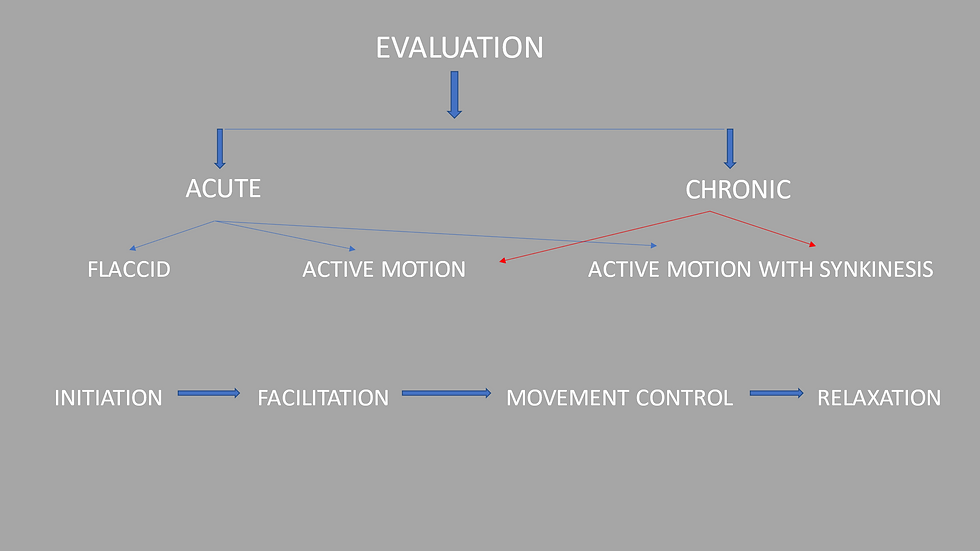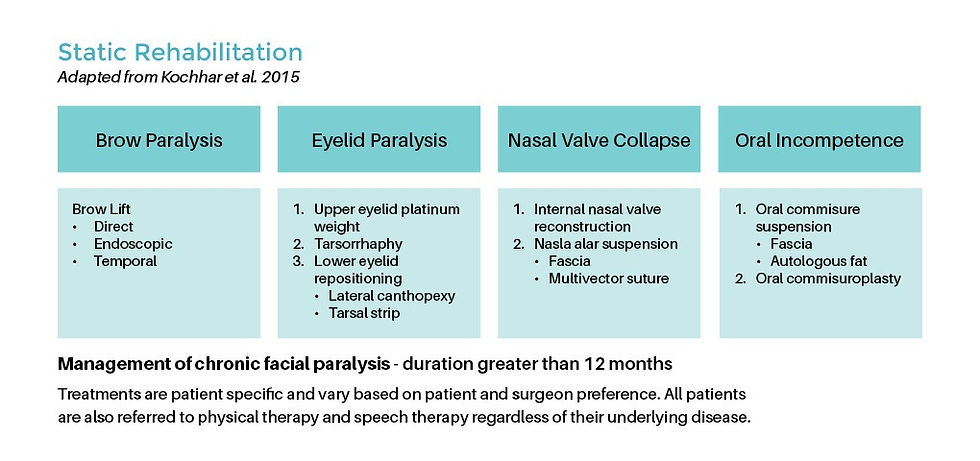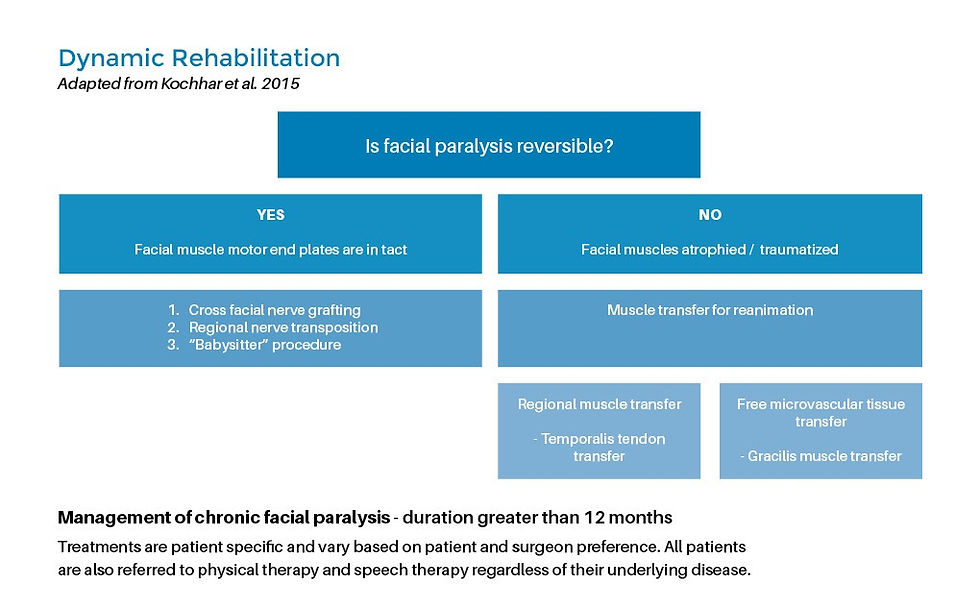A Comprehensive Guide to Facial Rehabilitation Protocol
- Dr .Lavanya Manoharan

- Sep 9, 2023
- 4 min read
What is facial rehabilitation?
Facial rehabilitation protocol, often referred to as facial therapy or facial retraining, is a specialized area of rehabilitation that focuses on restoring and improving facial muscle function. This protocol is crucial for individuals who have experienced facial nerve damage, paralysis, or any condition that affects their facial expressions and functions. Whether due to injury, surgery, or a neurological disorder, facial rehabilitation can significantly enhance an individual's quality of life by helping them regain control of their facial muscles and expressions.
How to assess facial palsy?
Different scoring systems are available, of them the commonly used is the House-Brackmann scoring system. When considering the synkinesis component also the Sunnybrook and E-face system are more comprehensive. E -Face grading systems can also be used by the individuals themselves for monitoring the progress.

Robert A. Gaudin, Mara Robinson, Caroline A. Banks, Jennifer Baiungo, Nate Jowett, and Tessa A. Hadlock JAMA Facial Plastic Surgery 2016 18:4, 251-257.
What are the goals and techniques?
Facial rehabilitation is a multi-faceted approach that combines various techniques and exercises to address a wide range of issues affecting the face. These issues can include facial nerve palsy, Bell's palsy, facial muscle weakness, post-surgery recovery, and even facial muscle imbalances resulting from habits or lifestyle factors.
The primary goals of facial rehabilitation protocol are to:
Restore facial muscle strength: Strengthening exercises help individuals regain control over their facial muscles, enabling them to perform basic facial movements such as smiling, frowning, and blinking.
Improve facial symmetry: Many individuals with facial nerve damage or paralysis experience asymmetry in their facial features. Facial rehabilitation aims to correct this imbalance and restore a more natural appearance.
Enhance facial coordination: Coordinating facial muscle movements is essential for a wide range of functions, from speaking and eating to emotional expression. Facial therapy helps individuals regain control and coordination of these muscles.
Manage pain and discomfort: Some individuals may experience pain, discomfort, or tightness in their facial muscles. Rehabilitation can help alleviate these symptoms and improve overall comfort.
Boost confidence and self-esteem: Restoring facial function and appearance can have a profound impact on an individual's self-esteem and confidence. Facial rehabilitation can help individuals feel more comfortable in social situations and improve their overall quality of life.
Facial rehabilitation protocol typically involves a combination of the following components:

Education: Understanding the underlying condition and the importance of adhering to the rehabilitation process is the first step. Patients learn about their specific condition, the anatomy of facial muscles, and the expected outcomes of rehabilitation.
Exercises: A tailored exercise regimen is a cornerstone of facial rehabilitation. These exercises target specific muscle groups, helping individuals regain control, strength, and coordination of their facial muscles. Exercises can be passive (performed by a therapist) or active (performed by the patient).
Massage and manual therapy: Gentle massage and manual techniques are used to improve blood circulation, reduce muscle tension, and promote relaxation in the facial muscles.
Neuromuscular re-education: This technique focuses on retraining the nerves and muscles to work together effectively. It involves activities that require conscious effort to control facial movements.
Biofeedback: Biofeedback technology can be used to provide patients with real-time information about their muscle activity, helping them learn how to control their facial muscles more effectively.
Electrical stimulation: In some cases, electrical stimulation may be employed to stimulate facial muscles and promote muscle re-education.
Emotional support: Coping with the physical and emotional challenges of facial muscle dysfunction can be challenging. Emotional support from a therapist or support group can be a vital component of the rehabilitation process.
It's important to note that facial rehabilitation protocols are highly individualized. Each patient's condition is unique, and their treatment plan should reflect that.
What are the surgical options in Facial rehabilitation?
Facial rehabilitation involves both static and dynamic surgical procedures to address a range of facial conditions. Static procedures focus on restoring facial aesthetics and structure while maintaining a relatively fixed appearance. These can include procedures like facelifts or facial implants. Dynamic surgical procedures, on the other hand, aim to restore facial movement and expression, often used in cases of facial paralysis. Techniques such as facial nerve grafts or muscle transfers enable patients to regain natural facial animation.


What is the duration of Facial Rehabilitation?
Duration of facial rehabilitation varies from person to person and depends on several factors, including the severity of the condition, the individual's commitment to the therapy, and their overall progress. Some individuals may see significant improvement within a few weeks, while others may require several months of therapy.
Patients are typically encouraged to continue their exercises and maintenance routines even after their initial rehabilitation program is complete. This helps ensure long-term success and continued improvement in facial muscle function.
Conclusion:
Facial rehabilitation protocol is a vital and effective approach for individuals with facial muscle dysfunction. Whether it's due to nerve damage, paralysis, or other factors, this specialized rehabilitation can significantly improve facial function, appearance, and overall quality of life. If you or someone you know is dealing with facial muscle issues, consider seeking the expertise of a healthcare professional trained in facial rehabilitation at Bangalore head and neck sciences to create a tailored treatment plan and embark on the journey to facial recovery and rejuvenation.












Comments